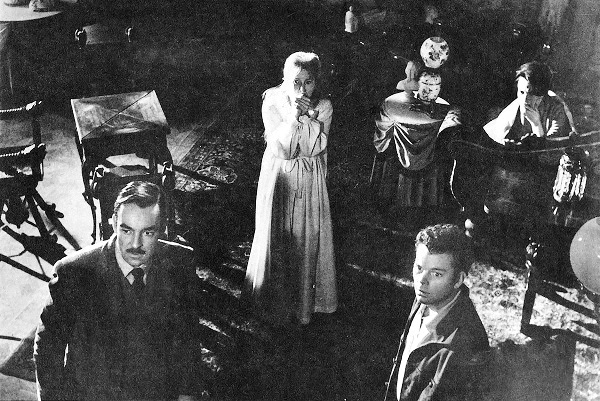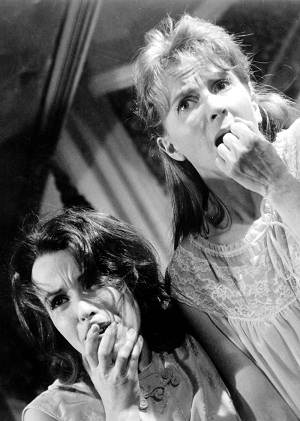"DO NOT touch that!"
"Why not, mum?"
"Because you'll get hurt. And because I said so!"
"But it's just a rock?"
"Yes, but it's covered in excrement, broken glass, venomous-spiders and diseases."
"Hmm... OK, mum"
then later:
"Look at you! You touched the rock didn't you?!"
[sheepishly] "Yes!"
And now, as a an intelligent, free-thinking adult, you can experience exactly what the British Board of Film Classification has told you not to touch! The BBFC is 100 years old this year and the British Film Institute is scrutinizing the scrutinizers.
You’ve witnessed enough bland, anodyne cinema in your life and now you hanker after something else. You want to be challenged, you want to be shocked and you want to be titillated in weird, new ways. And why wouldn't you? Quite frankly you'd like to push some boundaries and have some fun.
The BFi has heard your cries and programmed a season of films just for you. And to top it off they are hosting a debate on the role of the BBFC as Britain's chief censors and arbiters of what is permissible. All of the films have been banned or partially censored within the last century and all of them are, for whatever reason, viewable now with most of those offending elements reinstated. Times have moved on and while you can argue that the acceptance of sex, violence and unusualness on show here demonstrates a slide into moral vacuity, you could equally contest that it shows that we are all more accepting of challenging material. Yes there is plenty which is, quite rightly, taboo but there are also some things that should not have been banned at all and, in the cold light of day, pose no threat to modern society.
Here's a short preview of some of the delights on offer:
Crash (1996, dir. David Cronenberg)
Famously banned by Westminster council on the grounds that the film was "bordering on obscenity", "liable to lead to copycat action" and guilty of depicting women in a "sexually humiliating way", Crash now looks remarkably restrained and quite un-erotic today. It remains an excellent study of sexual fetish and a mind unable to find the satisfaction it craves despite pushing itself further towards destruction. It features strong performances and just the right level of icily detached direction.
The Evil Dead (1982, dir. Sam Raimi)
The vertiginous, funny, roller-coaster-speed spills and thrills of Raimi's horror classic were only relatively recently available uncut in the UK. Originally The Evil Dead received an 'X' certificate with numerous excisions. Once again, on a recent viewing of this seminal work, it is easy to see why it might have offended but most of the gore and horror is undercut by a keen and vicious streak of black humour.
Indiana Jones and the Temple of Doom (1984, dir. Steven Spielberg)
The "not as awesome of powerful as Raiders, but still watchable" action/adventure prequel suffered at the scissor-like hands of editors when the BBFC requested the removal of a scene in order to secure a more universal PG rating. It was the removal of a man's heart through his rib-cage by the particularly strong hand of the film's villain which proved problematic. Recent releases have seen the scene restored.
This is England (2006, dir. Shane Meadows)
On release, This is England earned itself an 18 certificate from the BBFC for racist language and violence. Director Meadows insisted that 15 would have been a fairer limit for it, allowing it to be seen by a secondary school audience who would have empathised with the issues presented. This Is England also serves as a valuable history lesson as well as cautionary tale. To think that the film condones racism in any way would be missing the point by a considerable margin. Yes, the naturalistic performances and stark beauty of the film intensify the emotions and impact but I can only think that a 15 year old would have benefitted from seeing the effects of racism on "real" people and communities.
The next 2 films are released on BFI DVD on November 5th 2012
Sick: The Life & Death of Bob Flanagan, Supermasochist (1997, dir. Kirby Dick)
A tough documentary to stomach for two reasons. The first is for the graphic depictions of the pain that Bob inflicts on himself: Needles, hammers and nails are used to derive sexual gratification. The second reason for uneasy viewing, is the realisation that Bob is trying to control the pain he feels from the cystic-fibrosis which is slowly killing him. Bob's humanity and intelligence shine through even as his wife dominates and sexually tortures him to the bitter end.
Maîtresse (1975, dir. Barbet Schroeder)
Receiving a ban on initial release in the UK for it's graphic scenes of bondage and sado-masochism, Maîtresse still has the power to induce winces when the pain-giving starts. The love story between Gerard Depardieu's thief and the dominatrix (Bulle Ogier), whose house he invades, is convincing and complex. It looks great too, and the fetish fashions on display give it a curiously modern feel too.
Here's a full list of what's on in the season. Why not book yourself a ticket to something they never wanted you to see!




































